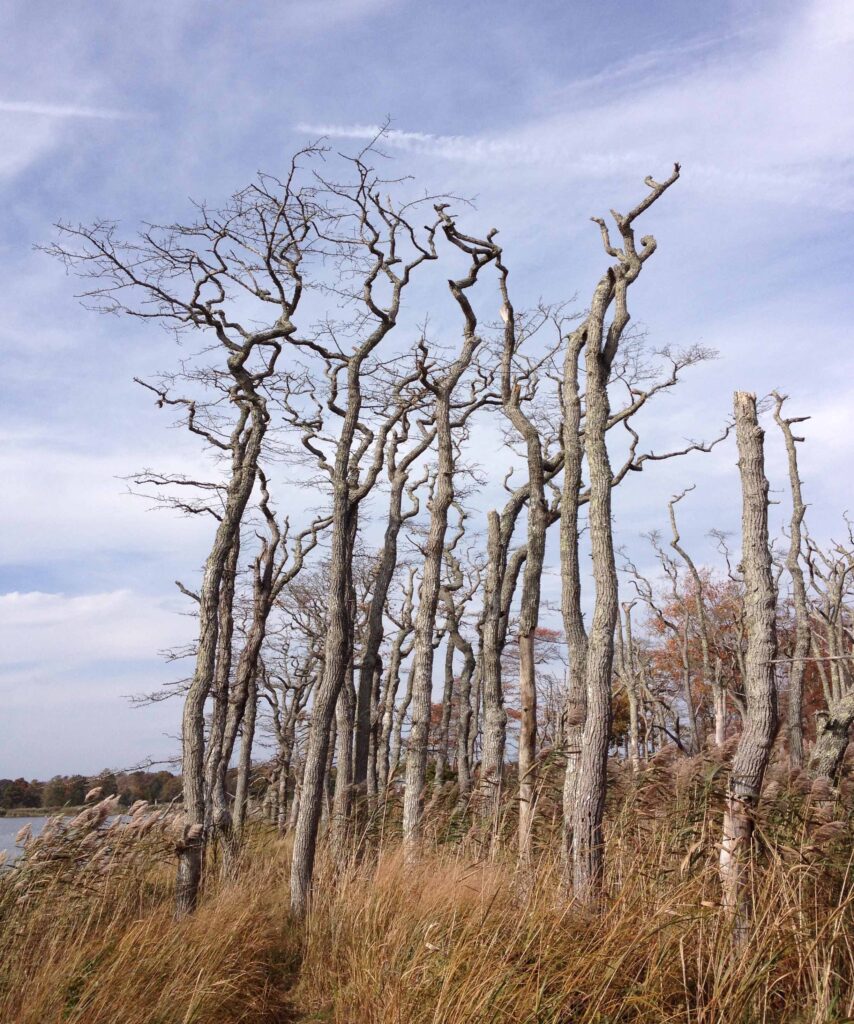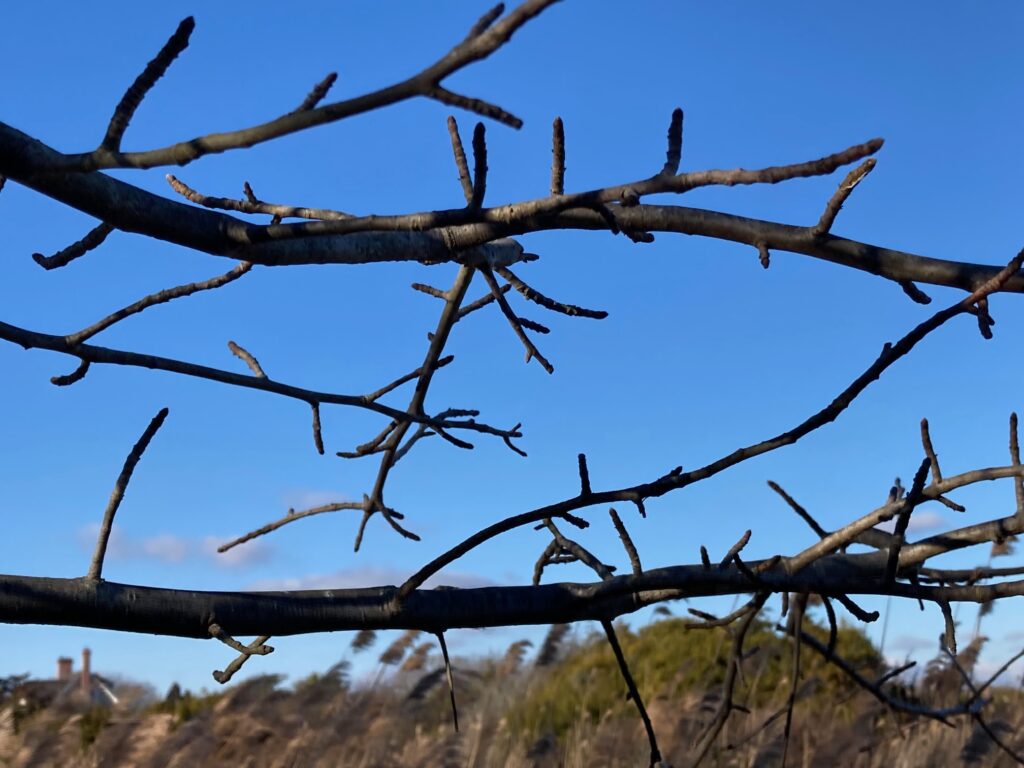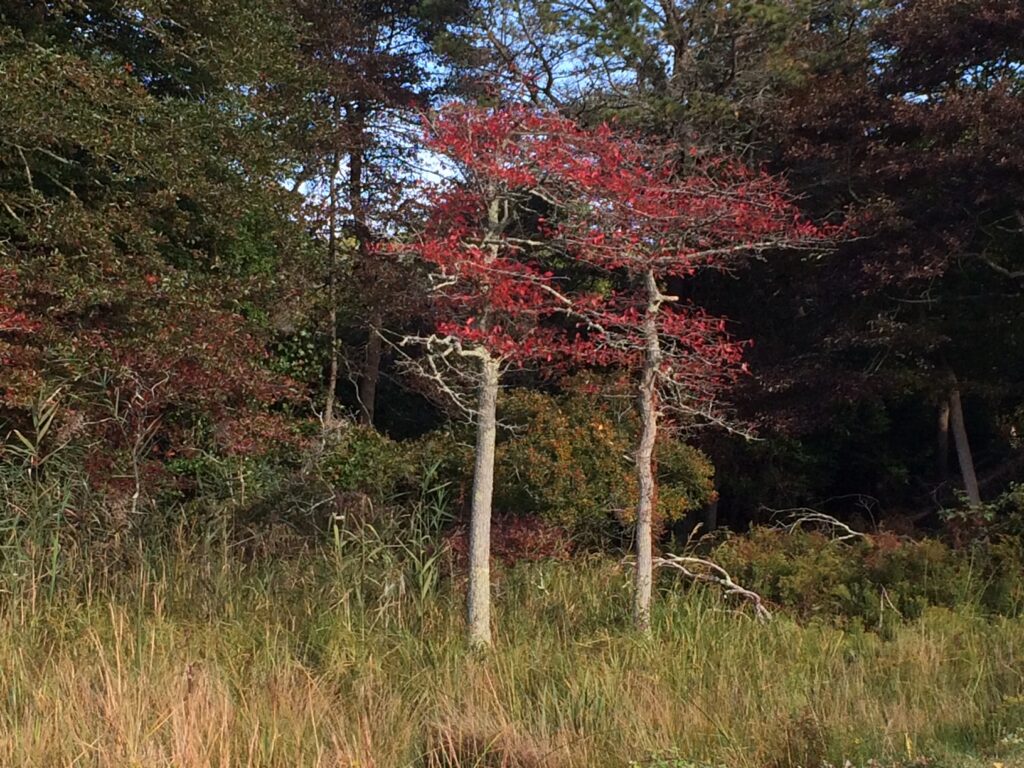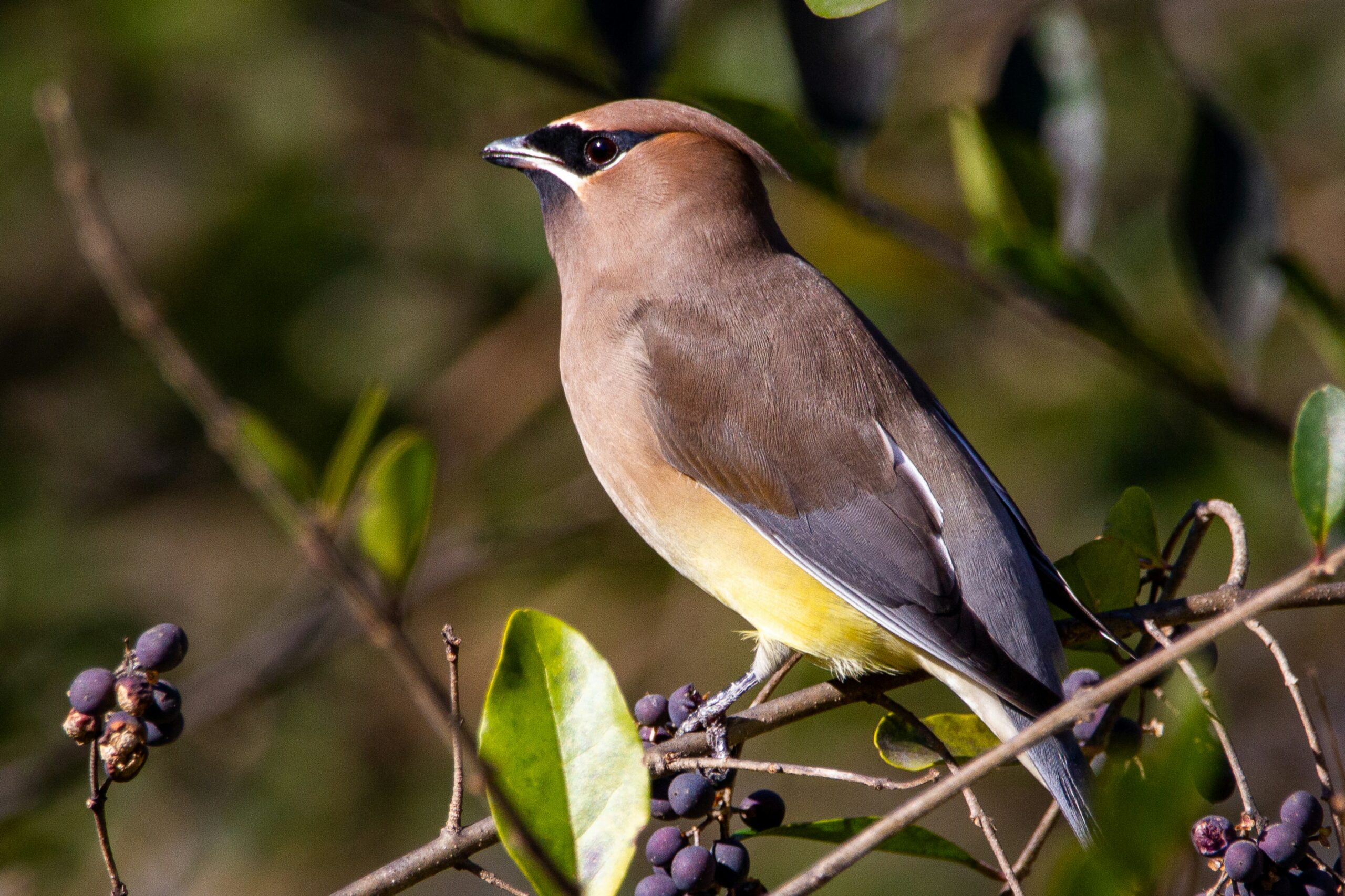Planting trees has become an important strategy to help counter global warming and if you were to pick one tree to plant near Georgica Pond it should be Nyssa sylvatica. Nyssa is Greek for water nymph, a perfect name for a tree that grows by the edge of the pond. It is known by many common names:
- Pepperidge*
- Black gum
- Gum
- Sour gum
- Yellow Gum
- Tupelo
- Black Tupelo
- Beetlebung**
*pepperidge tree seems to be the favorite, local name
**this name seems to be unique to Martha’s Vineyard

It is one of the most characteristic native trees of the buffer zone—that transition from the pond to the uplands. It is tough, low maintenance and likes its roots moist, but can also tolerate extreme drought in certain situations. It is not afflicted by any blights (yet!) and is becoming commercially available.

Do you know it? If not, you should. It is easy to recognize in all seasons once you know what you are looking for. In winter, without leaves, you can see the characteristic horizontal branching twigs very easily. It can often be found growing in groups or “stands.” In early fall it is one of the first trees to turn brilliant red. One of the cultivars commercially available is called “Wildfire” with good reason.

Wildlife Values
Growing close to fresh water, it is a favorite bird perching tree. At Georgica Pond, Nyssa sylvatica trees are used by bald eagles, ospreys, and double crested cormorants to name a few. It has other wildlife values, including its greenish, white flowers which are very attractive to bees and its dark blue fruits which are loved by many species of birds. The fruits can be eaten—but be prepared for a sour jolt.
If you’re lucky enough to have Nyssa sylvatica growing on your property, cherish it, and don’t try to move it. A large tap root makes moving almost impossible. If you want to plant some, please do so! According to Tony Piazza, owner of Piazza Horticultural and one of our most brilliant garden designers and organic gardening and native plant pioneers, Nyssa sylvatica is his favorite tree. He uses them often and has never lost one he has planted yet. On Shelter Island, he installed 62 of them in various sizes to create a stunning grove. He also used some at the Methodist Lane bioswale in East Hampton Village. Tony commented “there is no better locally native tree for fall color and wildlife services than Nyssa sylvatica. The blazing scarlet fall color is relatable and the fruits are favored by cedar wax wings.”

Horticultural Uses
Since the tree is dioecious, meaning the male and females are separate trees (like holly), you have to plant both individuals for fruiting. Here’s a conundrum. If you plant commercially available cultivars of Nyssa, most of them have been bred for uniform straight growth and fall color. You won’t get the twisted shapes of native trees and you may not get both males and females and, therefore, no fruit. The cultivars are still worth planting and the nursery industry is working to create excellent cultivars because of the demand. Some available cultivars include “Green Gable” and “White Chapel.”
Duck Decoys
You don’t hear much about the use of Nyssa timber. As a relatively slow growing tree, it is not a staple of the lumber industry. However, a specialized use for the wood is to make duck decoys. According to Jim Grimes, owner of Fort Pond Native Plants and the Deputy Clerk of the East Hampton Town Trustees, “it is the preferred wood for carving duck decoys.”
Where To See Them
There are many places to see Nyssa sylvatica in East Hampton. Practically every trail near fresh or brackish water, including near Hook Pond and the East Hampton Village nature trail, has them. As you enjoy them in all seasons you can hum that old Van Morrison Song, “She’s as sweet …as Tupelo honey, baby, just like honey from the bee.”
